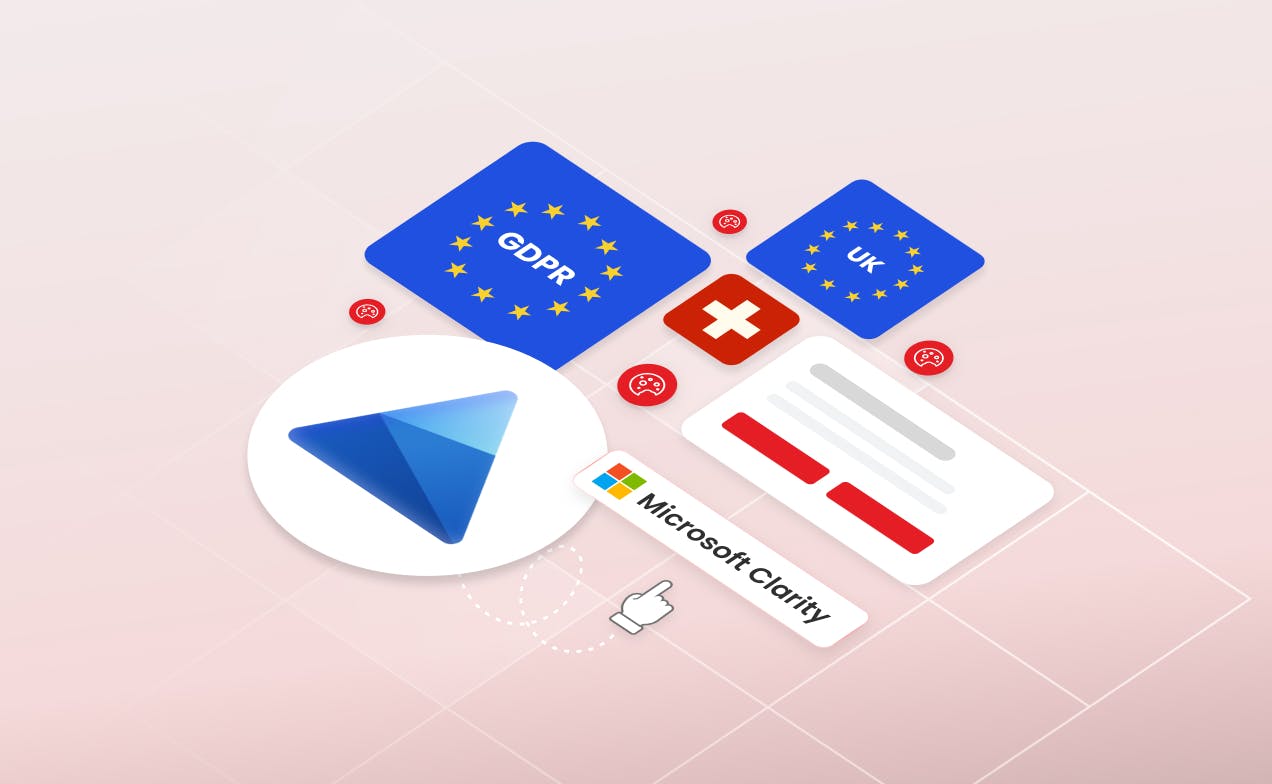
Starting October 31, 2025, Microsoft Clarity will require valid consent signals from visitors in the EEA, UK, and Switzerland before collecting analytics data. Without them, key features like session replays and funnels may be lost. Using a consent management platform such as CookieHub ensures compliance, preserves analytics quality, and maintains user trust.
As of October 31, 2025, Microsoft Clarity will begin enforcing consent signals for all web sessions originating from the European Economic Area (EEA), the UK and Switzerland. This is an important change for any website owner using the Clarity Consent API who receives visitors from those regions.
Let’s break down what this means, why it matters, and how you can implement a consent management platform (CMP) like CookieHub to stay compliant.
Clarity uses cookies to stitch together multiple pageviews into a single session, recognize returning visitors and power features like session replays, funnel tracking and heatmaps. Under EU/UK/Swiss privacy regimes, such as the GDPR (General Data Protection Regulation) and the ePrivacy Directive these behavioral analytics cookies are considered non-essential. This means you must obtain explicit consent before setting them.
Starting October 31, 2025, Clarity will not accept an assumption of consent. Instead you must communicate a valid consent signal (e.g., “analytics storage = granted”) to Clarity before its tracking script fires for visitors from those regions.
If you don’t, Clarity will either:
limit or disable session recordings, funnel tracking and user journey analysis for those users; or
fall back to cookieless or fragmented analytics where each page view is treated as a separate session.
In short: your data from EEA/UK/CH users will suffer in quality (or be missing entirely) if you don’t implement a proper consent signal mechanism.
The trend throughout web development and digital marketing – and the world as a whole – is going privacy and consent-first, even as businesses are ever-more-frequently found in violation. And regulators are moving more aggressively on monitoring and enforcement.
Among the primary reasons Clarity implementation is important are:
Naturally these mandates create new complexity for the people who need to implement them across their digital footprints. It’s a multilayered challenge, but one that robust consent management solutions can help to navigate and manage.
A consent management platform (CMP) such as CookieHub makes this much easier. Here’s how:
Display a cookie banner (or preference center) when a user from the EEA/UK/Switzerland visits, clearly categorizing cookies (e.g., essential, analytics, advertising).
Defer loading of Clarity’s (and other non-essential) tracking until the user gives consent. Block the Clarity script or cookies until then.
Once consent is given (e.g., user checks “analytics cookies”), the CMP pushes the consent signal to Clarity using Clarity’s Consent API.
The CMP logs the consent event (who consented, when, what they opted into) to provide an audit trail.
If the user withdraws consent later, the CMP ensures Clarity cookies are deleted or disabled and signals Clarity accordingly.
The CMP can also target the cookie banner only to visitors from the affected regions (EEA/UK/CH) to reduce friction elsewhere.
By doing this you align your website not only with Clarity’s October 31 requirement but with the broader cookie-consent regime. It’s a win-win: legal compliance + full analytics maintained.
Integrating the Clarity Consent API with CookieHub enables full control of user consent management, ensuring compliance, improving transparency, and enhancing the accuracy of your analytics data. Whether CookieHub is already your chosen CMP or you’re looking to adopt it as part of a more streamlined consent strategy, this integration bridges the gap between user privacy and actionable insights.